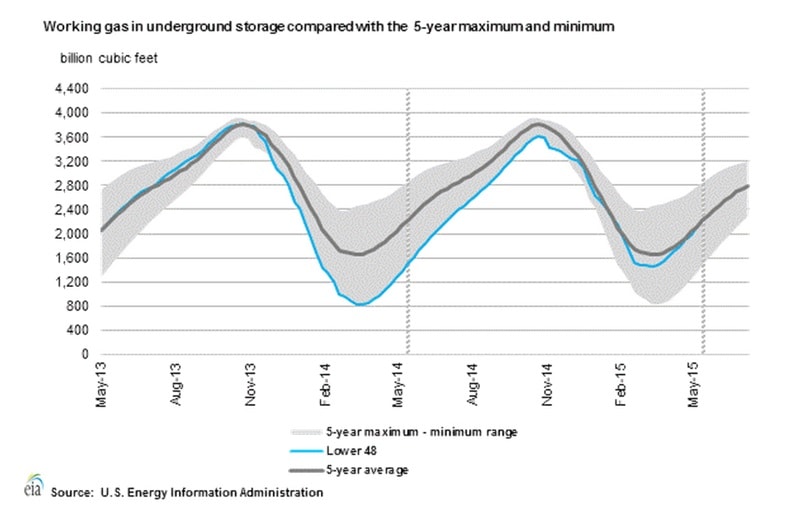July 2015, Vol. 242, No. 7
Features
Natural Gas Glut Could Persist Short-Term

Oil is not the only energy source that is seeing a glut. Growing supplies of natural gas could soon result in a similar phenomenon.
It was only a year and a half ago that the United States, and the northeast in particular, saw supplies dwindle to exceptionally low levels, forcing prices to temporarily spike. The Northeast experienced a freezing winter, leading to high levels of consumption as millions of people tried to keep warm. Natural gas storage levels plummeted to lows not seen in years.
The severe draw-down in storage levels during that cold 2014 winter raised fears that the situation would be even worse the following year. With inventories depleted, another brutal cold could blow a huge hole in storage levels.
And while the northeast did have a rough winter in 2015, and consumption levels were just as high as the year before, something different happened this time around: U.S. drillers produced a record level of natural gas in 2014, allowing inventories to quickly rebuild. After storage levels ran well below their five-year average (see chart), by the beginning of 2015, as production continued to rise, storage tanks filled up and overall inventories bounced back to the average.
That caused residential natural gas prices to crash back down to earth late last year and in the first few months of 2015, with no repeat of gas price spikes that were seen in 2014.
As inventories rise, prices fall. While that is good for consumers, shale gas drillers are beginning to worry. As production piles up and inventory levels were rapidly repaired, what happens next? Further inventory builds could turn the adequate supplies into a glut. By November, storage levels could surpass 4 Tcf, a record high, according to energy analysts.
Henry Hub prices are now half of what they were a year ago, selling at about $2.80 MMBtu.
Can prices fall any further? Henry Hub prices actually dipped below $2/MMBtu back in 2012, but after several years of incremental increases, prices are now at their lowest levels since then.
If production continues to rise, excess supplies will crash prices. With storage levels continuing to build, the brewing glut is starting to raise fears that such a bust in prices could be coming soon.
However, new data from the EIA suggests that the low prices are starting to kill off the boom, or at least, level it off. Natural gas production across the most prolific shale basins is expected to fall in July by 221 MMcf/d, led by a sharp decline in the Eagle Ford.
As in the oil markets, where traders are watching for signs that production declines will lead to price increase, any decline in natural gas production could prevent prices from falling much below where they are now.
On the demand side, the glut could be temporary. The United States sources around two-fifths of its electricity from coal, but that share is declining. Cheap gas and an environmental crack down on coal is pushing power plants around the country to switch over to natural gas. With a lot of gas-fired power plants under construction, demand is expected to significantly rise in the coming years. Dozens of gigawatts of new power plants burning gas will erase the gas glut.
Also, the United States is set to begin exporting natural gas abroad. The first major LNG export terminal on the Gulf Coast is expected to be completed by the end of the year. More natural gas shipped abroad will reduce supplies and raise prices.
Natural gas markets are at a pivotal point. Both production and consumption are at record levels, and could continue to rise. But in the short-term, with a lot of projects still under construction, excess supplies could persist.





Comments